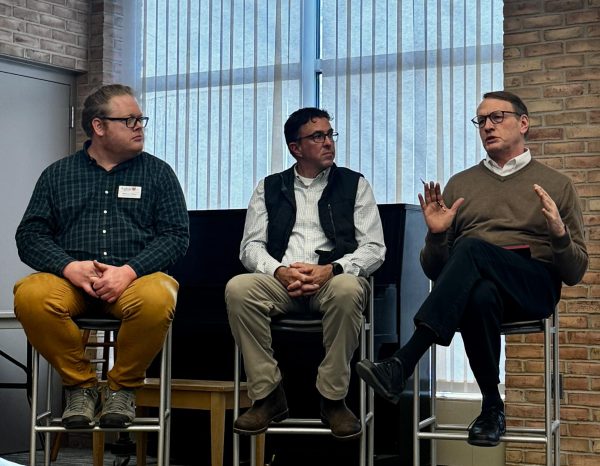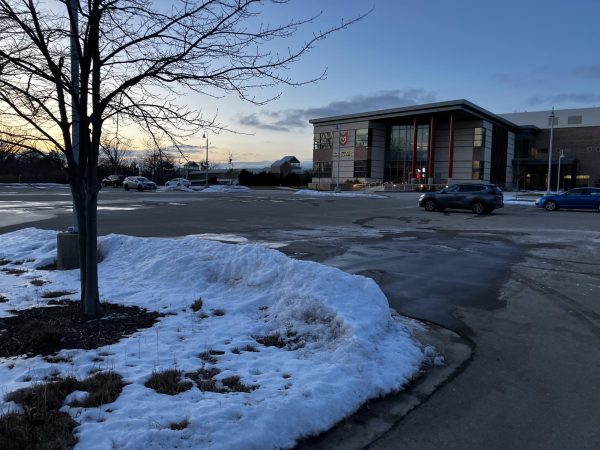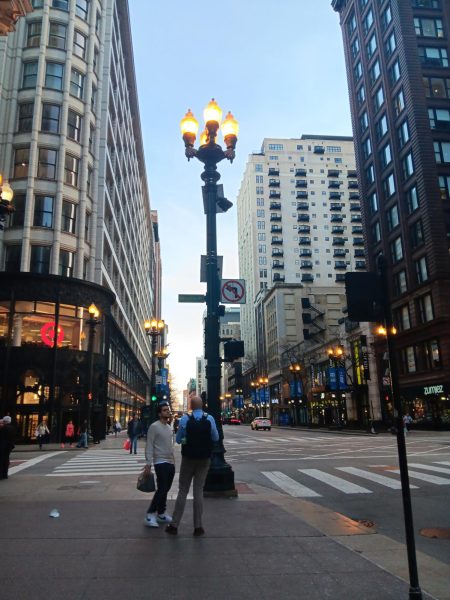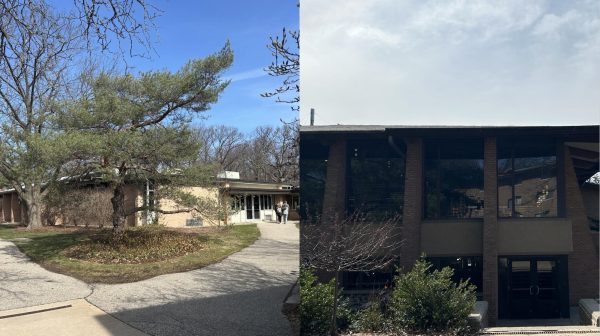NSF grant funds STEM ambassadors, builds interdepartmental community
The current STEM ambassadors Audrey Tran (center) and Haleigh Bos (right), along with Professor Herbert Fynewever (left) who leads the ambassadors. (Photo courtesy Audrey Tran)
When Calvin received a National Science Foundation grant in 2019 for “recruiting and retaining students in STEM at Calvin,” part of the funding was used to create two STEM ambassadors positions. Tasked with promoting and building community in STEM at Calvin, the positions are open to students in their sophomore year or above.
According to Anna Giboney, a former STEM ambassador in her junior year majoring in mechanical engineering and minoring in business, “[STEM ambassadors] recruit, retain, and build community within the STEM departments at Calvin.” Giboney and Andrew Burtt were the first pair of Calvin’s STEM ambassadors, and have since passed on the torch to Audrey Tran, a junior majoring in chemical engineering, and Haleigh Bos, a senior majoring in chemistry. Professor Herbert Fynewever of the chemistry department, who is also on the project leadership for the NSF grant, leads the STEM ambassadors and meets with them weekly.
“We want to be a strong face of Calvin, whether that’s for incoming freshmen, transfer students, or other students that are undecided on campus. We want to make sure they are feeling involved and realize the community and the resources that STEM provides,” Giboney said.
STEM student’s first few classes, otherwise known as “weeding out classes,” can be a very trying time. “As STEM ambassadors it is also our role to make sure students pass that trying time,” Giboney told Chimes. They do this by helping first-year students get connected to study resources, tutors and help from professors.
The STEM ambassadors also act as a team of interdepartmental community builders. This includes hosting STEM events — such as last semester’s Amazing Race, Eggstravaganza, and Silly Debate Night — as well as promoting departmental events. Their Instagram account, @calvin_stem, highlights STEM professors, students and ongoing research projects. This past summer, for example, the STEM ambassadors interviewed students and professors conducting summer research and created a video highlighting their work.
This semester, the STEM ambassadors are also planning to host monthly study nights for STEM students. Each monthly session, Tran said, will be focused on a particular STEM department and will include upperclassmen from that department. Everyone, however, will be welcome to join, regardless of major.
“When people grow friendships in the STEM departments, they can go to study groups,” Bos said. According to Bos, when students feel more connected with the overall STEM community, they are more likely to reach out to professors and to resources, because they know that they are grounded in community.
Aware that adapting to STEM studies at Calvin can be challenging, the STEM ambassadors are also trying to find ways to help motivate students. According to Tran, they are planning to put together a panel of upperclass STEM students who can share their own stories, so that underclassmen can understand they are not the only ones facing these challenges.
When the STEM ambassadors first started as a team, the biggest challenge was making departments, professors and students aware of the role they play as interdepartmental community builders. While awareness and engagement have greatly improved, the ambassadors still hope that departments and faculty will reach out more actively to them as a resource.
As a past ambassador, Giboney also encourages students to reach out to Tran and Bos. “If you have an event idea, or have a club that needs support, or need to find a tutor. . . just anything at all.’









